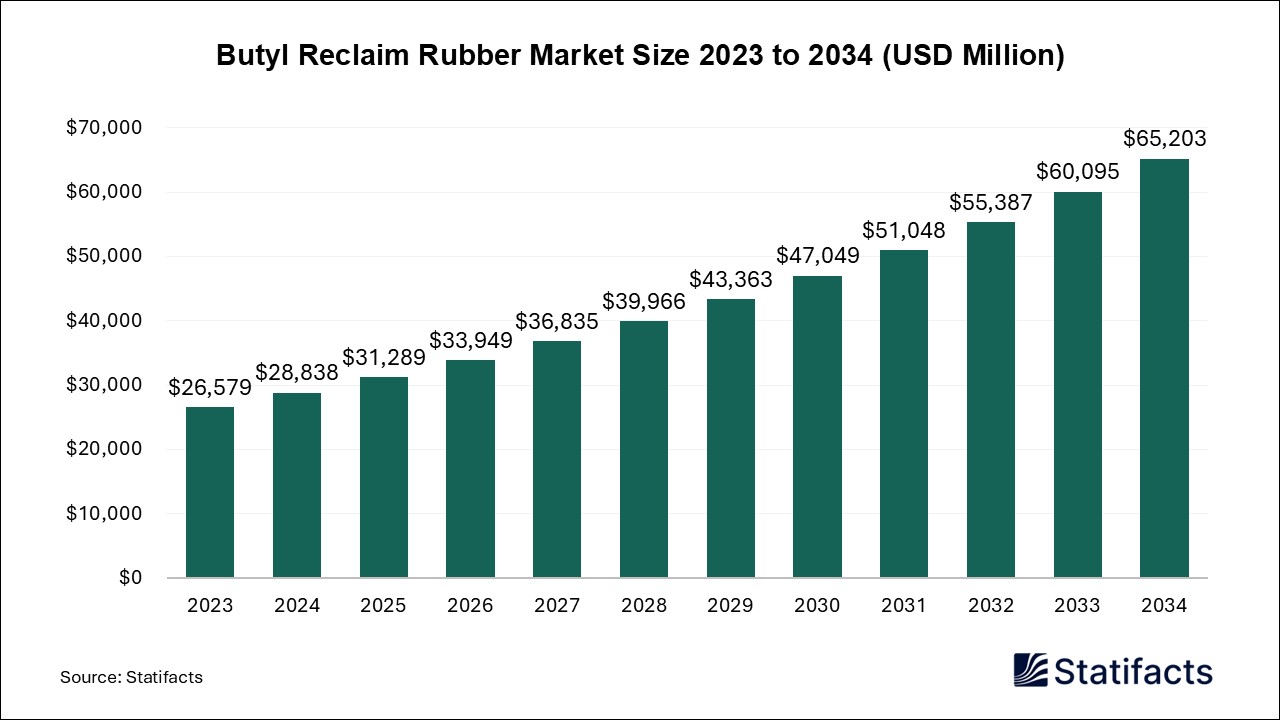
By clicking “Accept All Cookies” you agree to the storing of cookies on your device to enhance site navigation, analyze site usage, and assist in our marketing efforts.
Privacy PolicyUrology Endoscopes Market (By Product Type: Cystoscopy, Ureteroscopy, and Others; By Application: Urethral Malignancies, Urinary Bladders, Urolithiasis, and Others; By Modality: Disposable and Re-usable; By End User: Research and Academic Institutes, Ambulance Surgical Centre, Hospitals, Speciality Clinics, and Others; By Region: North America, Europe, Asia Pacific, and LAMEA) Industry Size, Share, Growth, Trends 2025 to 2034
The global urology endoscopes market, valued at USD 1,520 million in 2024, is projected to reach approximately USD 2,238 million by 2034. Driven by the rising incidences of urological disorders. The market is expanding as the global burden of kidney stones, urinary tract infections, bladder cancer, and benign prostatic hyperplasia continues to increase. These conditions, coupled with an aging population and growing awareness about early diagnosis, are leading to greater adoption of urology endoscopes in both hospitals and ambulatory surgical centers. The National Institutes of Health reports that nearly 40% of women and 15% of men experience urinary tract infections during their lifetimes, highlighting the widespread need for efficient diagnostic and therapeutic procedures.
| Reports Attributes | Statistics |
| Market Size in 2024 | USD 1,520 Million |
| Market Size in 2025 | USD 1,580 Million |
| Market Size in 2031 | USD 1,993 Million |
| Market Size by 2034 | USD 2,238 Million |
| CAGR 2025 to 2034 | 3.95% |
| Base Year | 2024 |
| Forecast Period | 2025 to 2034 |
The evolution of the healthcare sector has accelerated the adoption of minimally invasive urological procedures. Flexible and rigid endoscopes are being used extensively for cystoscopy, ureteroscopy, and other diagnostic and surgical applications. The demand for endoscopes with advanced imaging capabilities, superior flexibility, and ergonomic designs is rising as clinicians prioritize patient comfort and procedural efficiency. The shift toward minimally invasive techniques has also helped reduce hospital stays and recovery times, which aligns with the growing patient preference for outpatient and ambulatory surgical care.
The increasing prevalence of chronic urological disorders remains the primary growth driver. The rise in geriatric populations, who are more prone to conditions such as prostate enlargement and recurrent urinary infections, continues to support the market’s upward trajectory. Government initiatives and research investments are also fueling innovation in endoscopic technologies. These efforts aim to improve the diagnosis and treatment of pediatric and diabetic urological disorders, which require more precise and delicate instrumentation.
The increasing number of ambulatory surgical centers is another key factor driving market growth. These centers offer cost-effective, minimally invasive procedures with faster patient recovery times. As patients and healthcare providers increasingly favor such settings, demand for advanced, easy-to-handle urology endoscopes is expected to grow. Manufacturers are also focusing on developing specialized devices for specific patient groups, including women and children, which adds to the market’s expansion.
Despite favorable growth trends, several challenges persist in the urology endoscopes market. High manufacturing and maintenance costs can limit adoption, particularly among smaller healthcare organizations. The need for specialized training and skilled professionals also poses challenges in emerging markets where access to advanced equipment is limited. Additionally, the lack of awareness about modern endoscopic options in rural regions can slow down the rate of technological adoption.
However, these challenges present opportunities for innovation and expansion. Increasing government support for healthcare modernization in countries such as India, China, and Japan is creating new opportunities for both local and international manufacturers. These regions are actively working to strengthen their domestic medical device production, which will help lower costs and improve accessibility. Furthermore, ongoing advancements in imaging technologies, flexible laser endoscopes, and robotics are expected to enhance precision and safety in urological surgeries, fostering broader market acceptance.
Artificial Intelligence and Machine Learning are playing a transformative role in urology endoscopy. AI algorithms can analyze real-time video feeds from endoscopic cameras to detect abnormalities, lesions, and other disease indicators with greater accuracy. This automation assists healthcare professionals in identifying early-stage disorders and enhances diagnostic precision. The integration of AI also reduces operator fatigue by simplifying image interpretation and automating parts of the diagnostic process.
Machine learning tools further support predictive analytics, helping clinicians anticipate complications and customize treatment plans. As these technologies advance, they are expected to streamline workflows, improve patient outcomes, and reduce procedure times. Hospitals and surgical centers adopting AI-driven endoscopic systems will likely gain a competitive advantage by offering faster, safer, and more personalized care.
The urology endoscopes market is expected to experience steady growth over the next decade, supported by increasing healthcare investments, technological innovation, and patient demand for minimally invasive procedures. North America and Europe are projected to maintain a strong market presence due to advanced healthcare systems and favorable regulatory frameworks. Meanwhile, Asia-Pacific is emerging as one of the most opportunistic regions, driven by government healthcare initiatives, a growing middle-class population, and rising manufacturing capabilities.
The future of the market lies in innovation and accessibility. The integration of robotics, AI-driven diagnostics, and flexible imaging systems will redefine how urological diseases are detected and treated. As global healthcare systems continue to evolve, the urology endoscopes market will play an essential role in improving early diagnosis, procedural efficiency, and overall patient well-being.
| Regions | Shares (%) |
| North America | 35% |
| Asia Pacific | 25% |
| Europe | 30% |
| LAMEA | 10% |
| Segments | Shares (%) |
| Cystoscopy | 40% |
| Ureteroscopy | 35% |
| Others | 25% |
| Segments | Shares (%) |
| Urethral Malignancies | 25% |
| Urinary bladders | 30% |
| Urolithiasis | 35% |
| Others | 10% |
| Segments | Shares (%) |
| Disposable | 45% |
| Re-usable | 55% |
| Segments | Shares (%) |
| Research and Academic Institutes | 10% |
| Ambulance Surgical Centre | 15% |
| Hospitals | 45% |
| Speciality Clinics | 20% |
| Others | 10% |
Published by Kesiya Chacko
| Type | 2024 | 2025 | 2026 | 2027 | 2028 | 2029 | 2030 | 2031 | 2032 | 2033 | 2034 |
|---|---|---|---|---|---|---|---|---|---|---|---|
| Cystoscopy | 608 | 628.86 | 650.41 | 672.69 | 695.71 | 719.50 | 744.08 | 769.49 | 795.74 | 822.86 | 850.89 |
| Ureteroscopy | 532 | 556.17 | 581.43 | 607.81 | 635.37 | 664.15 | 694.22 | 725.63 | 758.44 | 792.71 | 828.50 |
| Others | 380 | 395.01 | 410.61 | 426.83 | 443.69 | 461.22 | 479.44 | 498.37 | 518.06 | 538.52 | 559.79 |
| Application | 2024 | 2025 | 2026 | 2027 | 2028 | 2029 | 2030 | 2031 | 2032 | 2033 | 2034 |
|---|---|---|---|---|---|---|---|---|---|---|---|
| Urethral Malignancies | 380 | 396.59 | 413.90 | 431.95 | 450.79 | 470.44 | 490.94 | 512.33 | 534.64 | 557.91 | 582.19 |
| Urinary bladders | 456 | 472.43 | 489.45 | 507.08 | 525.33 | 544.24 | 563.82 | 584.09 | 605.09 | 626.84 | 649.36 |
| Urolithiasis | 532 | 553.01 | 574.86 | 597.57 | 621.17 | 645.70 | 671.21 | 697.72 | 725.28 | 753.93 | 783.71 |
| Others | 152 | 158.01 | 164.24 | 170.73 | 177.48 | 184.49 | 191.77 | 199.35 | 207.23 | 215.41 | 223.92 |
| Subsegment | 2024 | 2025 | 2026 | 2027 | 2028 | 2029 | 2030 | 2031 | 2032 | 2033 | 2034 |
|---|---|---|---|---|---|---|---|---|---|---|---|
| Cystoscopy | 608 | 628.86 | 650.41 | 672.69 | 695.71 | 719.50 | 744.08 | 769.49 | 795.74 | 822.86 | 850.89 |
| Ureteroscopy | 532 | 556.17 | 581.43 | 607.81 | 635.37 | 664.15 | 694.22 | 725.63 | 758.44 | 792.71 | 828.50 |
| Others | 380 | 395.01 | 410.61 | 426.83 | 443.69 | 461.22 | 479.44 | 498.37 | 518.06 | 538.52 | 559.79 |
| Subsegment | 2024 | 2025 | 2026 | 2027 | 2028 | 2029 | 2030 | 2031 | 2032 | 2033 | 2034 |
|---|---|---|---|---|---|---|---|---|---|---|---|
| Urethral Malignancies | 380 | 396.59 | 413.90 | 431.95 | 450.79 | 470.44 | 490.94 | 512.33 | 534.64 | 557.91 | 582.19 |
| Urinary bladders | 456 | 472.43 | 489.45 | 507.08 | 525.33 | 544.24 | 563.82 | 584.09 | 605.09 | 626.84 | 649.36 |
| Urolithiasis | 532 | 553.01 | 574.86 | 597.57 | 621.17 | 645.70 | 671.21 | 697.72 | 725.28 | 753.93 | 783.71 |
| Others | 152 | 158.01 | 164.24 | 170.73 | 177.48 | 184.49 | 191.77 | 199.35 | 207.23 | 215.41 | 223.92 |
To get full access to our Market Insights, you need a Professional Account or a Business Suite.

You will receive an email from our Business Development Manager. Please be sure to check your SPAM/JUNK folder too.

You will receive an email from our Business Development Manager. Please be sure to check your SPAM/JUNK folder too.

Our customers work more efficiently and benefit from



